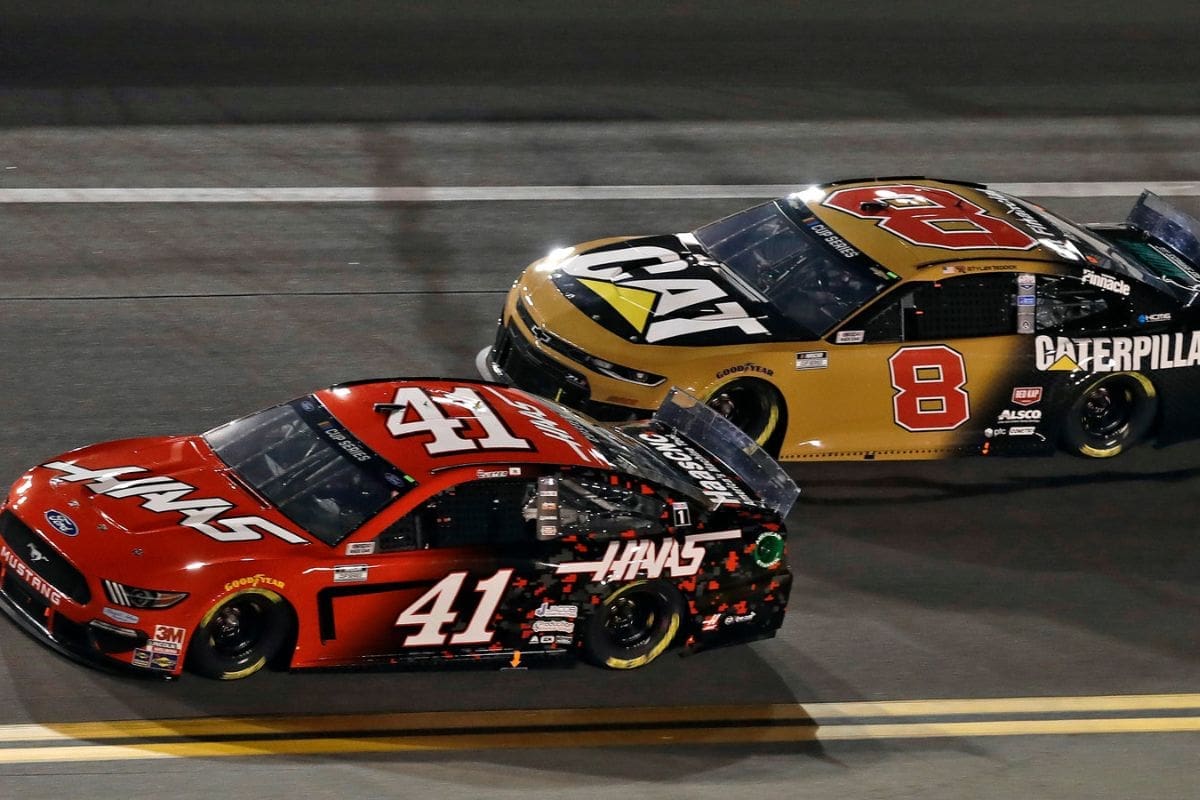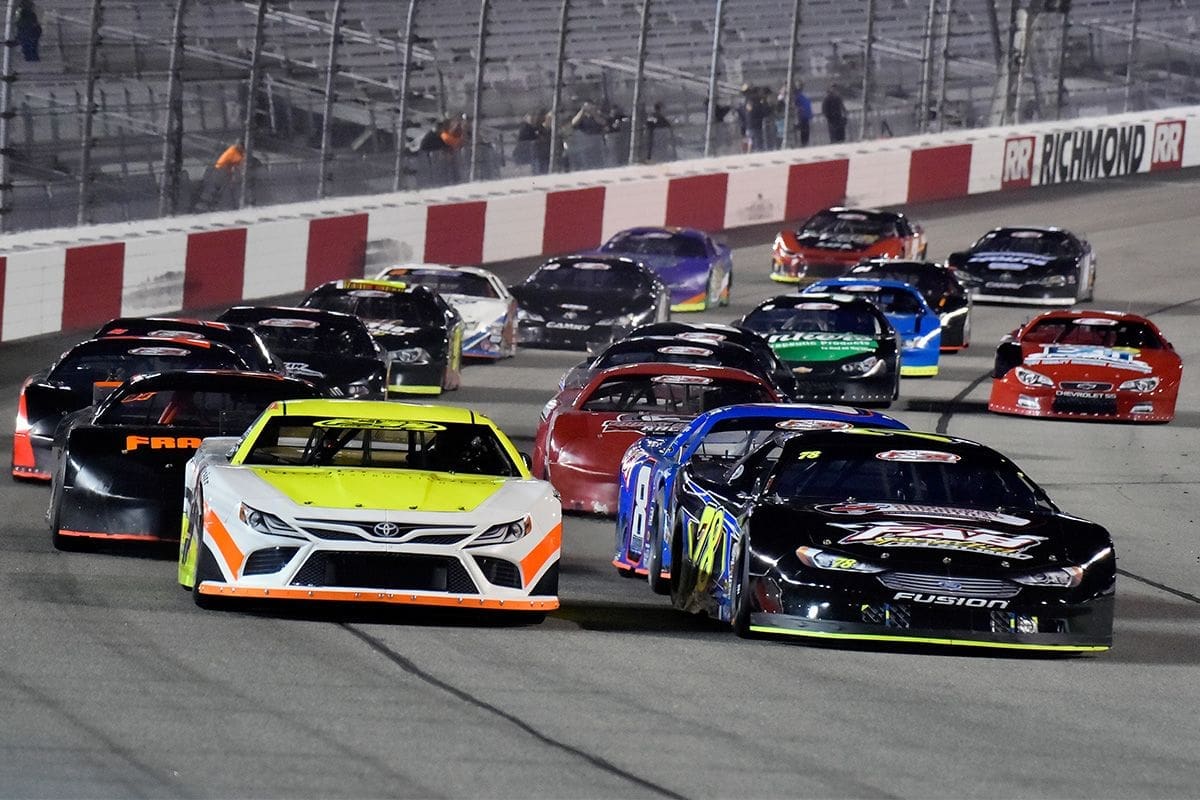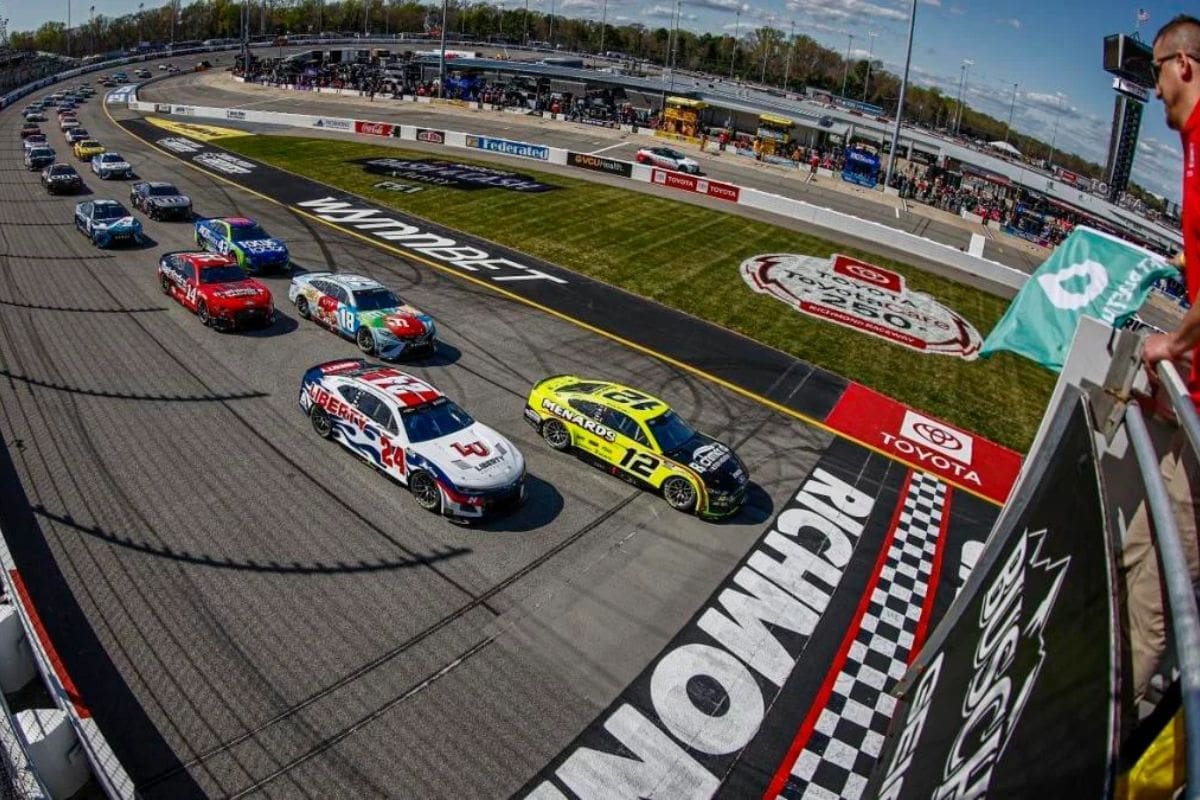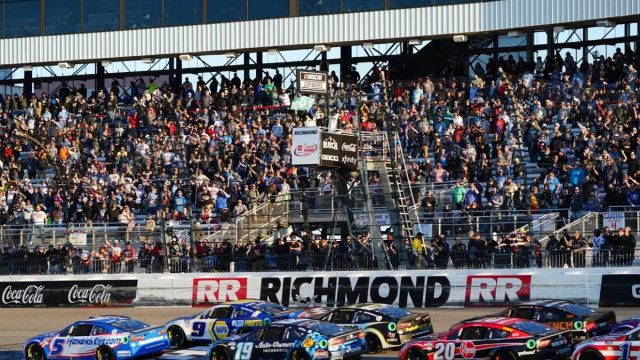Richmond Race Draws Massive Backlash: NASCAR’s Richmond race, marred by strategic similarity and a unispired display of diversity in racing tactics, has sparked widespread disapproval. Key moments, including a late caution that reshuffled the leaderboard, highlighted the race’s unpredictability, yet failed to captivate. Fans expressed a range of reactions, from excitement over strategic moves, like Hamlin’s victory, to disappointment over the event’s overall predictability and the new short track package’s ineffectiveness. Amid the mixed sentiments, the demand for NASCAR to find a balance between innovation and tradition grows louder. This situation necessitates a closer examination of NASCAR’s strategies and the challenges it faces in evolving the sport.
Key Takeaways
- Fans expressed significant disappointment over a lack of diverse race strategies and predictable outcomes at the Richmond race.
- Criticism targeted the ineffectiveness of NASCAR’s new short track package, disappointing many attendees and viewers.
- A late caution and pit-stop scramble dramatically altered the race dynamics, disadvantaging leading drivers and reshuffling positions.
- Mixed fan reactions highlighted polarized views on NASCAR’s management decisions and the event’s entertainment value.
- The intense finish, while exciting for some, failed to compensate for the overall event’s predictability and lack of consistent action.
Mixed Feelings at Richmond: Larson’s Early Dominance Fizzles Out
At Richmond, Kyle Larson’s early display of dominance initially promised an exhilarating race, yet as conditions shifted toward dry tires, the event gradually lost its anticipated spark, leaving fans and strategists equally yearning for the drama and tactical depth that never materialized. This unfolding paints a vivid picture of a race that, on paper, held the potential to become a classic display of NASCAR’s strategic complexity and driver skill. The track at Richmond, notorious for its tire wear and the critical decisions it forces teams to make regarding pit stops and tire strategies, seemed poised to deliver an engaging spectacle.
However, as the race evolved and the conditions favored a switch back to dry tires, the anticipated strategic battles and lead changes became conspicuously absent. This lack of spectacle did not just disappoint; it sparked a broader conversation about the race’s structure and the unpredictability—or lack thereof—that modern NASCAR races can sometimes display. The early excitement surrounding Larson’s performance waned, not due to any fault of his own, but because the race failed to evolve into the multi-faceted strategic contest that many had hoped for.
This scenario highlights a critical aspect of motorsport that extends beyond mere speed and driver skill: the importance of adaptability and strategy in crafting a race that remains engaging throughout its entirety. As fans and analysts dissect the outcomes of the Richmond race, the broader implications for how races are structured and how they can maintain an element of unpredictability and excitement from start to finish become glaringly apparent.

Hamlin Shines Amidst Controversy: Truex’s Lead Slips Away
Securing his second win of the season in a race mired in controversy, Denny Hamlin‘s late surge at Richmond saw Martin Truex Jr.’s commanding lead diminish, ultimately reshaping the championship landscape. This marked Hamlin’s fifth triumph at the track, a confirmation of his prowess and ability to capitalize on crucial moments. However, the race was not without its contentious points, primarily the late caution that markedly altered the course of events, leading to a pit-stop scramble that saw Truex fall from grace, settling for fourth place.
The implications of this outcome are multifaceted, not only affecting Truex’s lead in the championship but also highlighting the unpredictable nature of NASCAR races, where a single incident can dramatically change the standings. This event serves as a striking reminder of the thin line between victory and defeat in motorsport.
| Factor | Impact on Race Outcome |
|---|---|
| Late Caution | Shifted race dynamics, disadvantaging leading drivers |
| Pit-Stop Scramble | Altered standings, reshuffling positions |
| Hamlin’s Strategy | Demonstrated adaptability and strategic acumen |
| Truex’s Loss | Highlighted vulnerability of leaders to race variables |
| Championship Implications | Amplified competition, introducing new uncertainties |
This table encapsulates the critical elements that defined the race’s outcome, offering a deeper insight into the strategic intricacies of NASCAR. Hamlin’s victory, while celebrated, also highlights the inherent unpredictability of racing, where strategy, timing, and a bit of fortune intertwine to determine the victor. As the season progresses, this race will no doubt be reflected upon as a crucial moment that tested the mettle of championship contenders, setting the stage for an intensely competitive battle for supremacy.
Disappointment Among Fans: NASCAR’s Richmond Race Falls Flat
The recent NASCAR race at Richmond, while anticipated with much excitement, ultimately led to widespread dissatisfaction among fans, stemming from contentious decisions and the perceived ineffectiveness of the new short track package. This event, marked by its promising buildup, failed to deliver the thrilling spectacle that many had hoped for, highlighting several critical areas of concern.
Key points contributing to the fans’ disappointment include:
- Lack of Diverse Race Strategy: The race was criticized for its predictability and the absence of strategic depth that usually adds layers of excitement and unpredictability to the event.
- Wet Start Controversy: While some fans found the wet start an interesting twist, others felt it was a gimmick that detracted from the race’s integrity, raising questions about NASCAR’s decision-making.
- Ineffectiveness of the New Short Track Package: Introduced with high expectations, the new package fell short of addressing the core issues plaguing short track races, leading to a lackluster performance that left fans underwhelmed.
- Questionable Decision-Making by NASCAR: The race was marred by controversial decisions by NASCAR officials, which not only impacted the race’s outcome but also frustrated fans and participants equally, casting a shadow over the event’s credibility.
The combination of these factors contributed to a palpable sense of disappointment among the NASCAR community, challenging the organization to reassess its strategies and decision-making processes. As NASCAR aims to captivate its audience with high-octane entertainment, the Richmond race serves as a critical learning opportunity to refine its approach and make sure the sport’s enduring appeal.

Fan Reactions Reflect Mixed Sentiments
Following the Richmond race, a wave of fan reactions flooded social media platforms, reflecting a spectrum of opinions that highlighted the complex sentiments within the NASCAR community. The diversity of viewpoints emphasized not just the polarized nature of the fanbase but also the intricate relationship between the sport’s governance and its audience’s expectations.
Absolutely not.
Bad and inconsistent officiating.
Not much passing after first 2 laps.
Teams scared to try different strategies after BS caution.— Here for the Speed Podcast (@hereforthespeed) April 1, 2024
Many fans lauded the event as a thrilling showcase of skill and strategy, hailing it as a standout performance in the recent history of races at Richmond. Their enthusiasm was palpable, with commendations for the drivers’ prowess and the event’s overall execution. This segment of the audience perceived the race as a confirmation of NASCAR’s enduring appeal and its capacity to deliver high-octane entertainment.
Was Richmond a good race?
— Jeff Gluck (@jeff_gluck) April 1, 2024
Conversely, a significant contingent of the fanbase expressed dissatisfaction with NASCAR’s management of the race. Criticisms ranged from specific decisions made during the event to broader grievances about the direction in which the organization is steering the sport. This discord among fans highlights a critical challenge for NASCAR: balancing the traditional elements that have cemented the sport’s popularity with the imperative to innovate and evolve in response to changing dynamics and expectations.
“Didn’t really see the diverse race strategy we’re used to seeing…”
The mixed sentiments among fans, therefore, serve as a gauge for NASCAR’s current standing within its community. They reflect a significant moment of introspection for the organization, requiring a delicate navigation between honoring its heritage and embracing the future. This dichotomy of fan reactions highlights the nuanced relationship between NASCAR and its diverse fanbase, signaling the complexities involved in managing and growing a sporting phenomenon in today’s rapidly changing entertainment landscape.
Richmond Race: A Divisive Topic
Amidst the swirling controversies, the Richmond race emerged as a polarizing event that sharply divided the NASCAR community. The discourse surrounding the event illustrates a complex web of fan sentiment, underlining the multifaceted nature of motorsport appreciation. At the heart of the debate were several key issues that drew fans into extensive discussions, both online and offline, demonstrating the passionate involvement of the NASCAR fanbase.
To encapsulate the depth of the divide, consider the following points:
- Endgame Excitement: A faction of the audience lauded the race for its climactic finish, arguing that the suspenseful endgame epitomized the essence of racing drama and competitiveness.
- Overall Event Disappointment: Conversely, a significant portion of the fanbase expressed dissatisfaction, pointing out that a few moments of thrill could not compensate for what they perceived as an otherwise lackluster race.
- Engagement in Discourse: Regardless of their stance, fans showed an unwavering commitment to engaging in meaningful discourse, reflecting a deep-seated passion for the sport and its direction.
- Future Direction of NASCAR: The discussions often transcended the specific events of the Richmond race, touching upon broader concerns regarding NASCAR’s trajectory, rules, and the balance between entertainment and sporting integrity.
This divide is not merely about one race; it summarizes the broader challenges NASCAR faces in evolving its identity while maintaining its core fanbase. As the organization navigates these waters, the Richmond race serves as a poignant reminder of the delicate balance between innovation and tradition in the world of competitive motorsport.

News in Brief
The NASCAR event at Richmond has clearly become a polarizing topic within the motorsports community. The early promise shown by Larson’s performance waned, leading to a shifting focus towards Hamlin amidst a backdrop of controversy.
The anticipation and excitement traditionally associated with the Richmond race were conspicuously absent, as echoed by the collective disappointment of fans. This event highlights the complexity of managing competitive dynamics and fan expectations, emphasizing the nuanced challenges faced by NASCAR in maintaining the sport’s vibrancy and appeal.
Our Reader’s Queries
Q: Who won Richmond Nascar 2024?
A:Denny Hamlin’s No. 11 Joe Gibbs Racing team executed a crucial pit stop, propelling him to the lead. Hamlin maintained his advantage in a two-lap overtime finish, clinching victory at the Toyota Owners 400 at Richmond Raceway, his home track.
Q: Who won the Richmond Cup race today?
A: Denny Hamlin emerged as the remarkable victor of the NASCAR Cup Series Toyota Owners 400 at Richmond Raceway, navigating a late-race caution, pit stop, and restart to secure the win. Full race results are as follows
Also Read: Chase Elliott’s Season Best Finish: Richmond Race Sparks Excitement!
